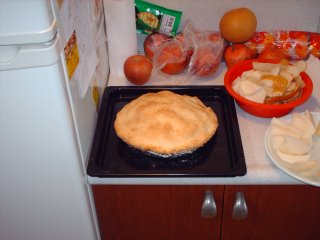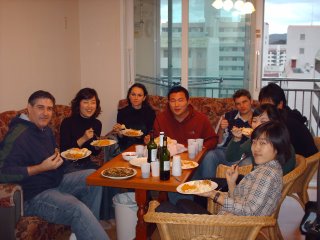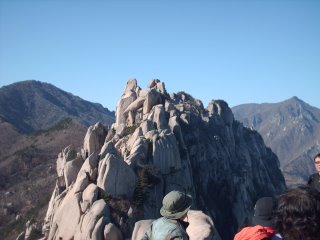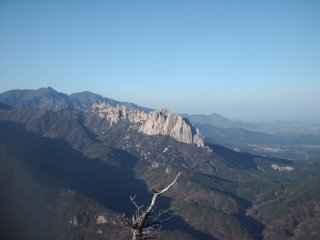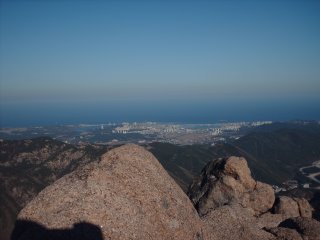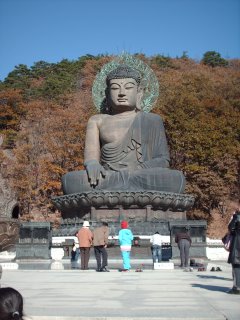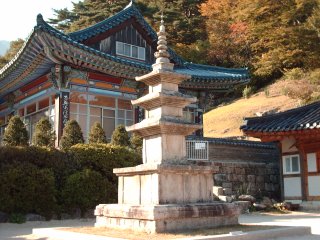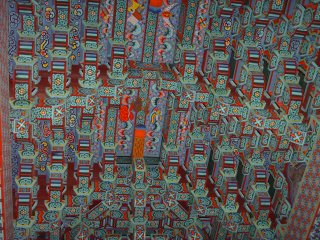Lessons From My Students
1. "Rock, paper, scissors" solves all disputes
It's a very simple method of conflict resolution that is virtually universal no matter what you call it (my students call it "Rock, scissors, paper" and one of my teacher's books calls it "Paper, scissors, stone," so clearly there isn't a consensus on its title). Most of my students are extremely competitive. On days when we have one-on-one interviews, when it's time to read out loud in class, or especially when it's time to decide who will go first on game day; basically any time they have to take turns doing anything they crowd around me screaming "Me first!" at the top of their lungs. So, I tell them "Rock, paper, scissors" and immediately they begin shaking their fists and within a couple of minutes everything has been sorted out. And the best part is that (usually) there is no further dispute. If only adult conflicts were this easy to resolve!
2. "Hangman" never gets old
Often, it is difficult for my students to remain focused on the lesson for an entire half hour. For some, their attention span doesn't extend much beyond sixty seconds, especially in the second half-hour of the hour most of them spend at the academy each day. Thus, it is necessary to have a fall back position when the lesson goes down the tubes. Personally, I find my sanctuary in "Hangman," the spelling contest game. For some reason, my students never tire of trying to guess which of their vocabulary words I've chosen to test them on this time. Sure, it's a game and I'm supposed to be teaching them something, but I think some of them learn more from "Hangman" than they do from reluctantly sitting through my lessons, blatantly ignoring me the entire time. At least with "Hangman," they are somewhat engaged. Also, my skills at the game have become quite formidable.
3. Age matters
Sorry Aaliyah, but age is of the utmost concern in Korea. This part of Korean culture actually deserves more explanation than I'm going to give it here, but suffice it to say that Koreans are very age-conscious. There are different words that are used to refer to people who are older or younger than you, and chingu, which is sometimes mistakenly equated with the English "friend," is only used to refer to a friend who is of the same age as you. Employment of honorifics also depends on knowing the age of your conversation partner. There have been a few occasions when one of my fellow wayguk friends (although, we're not chingu) has invited some Korean friends from the university to join us for dinner and the younger ones have later told him that they don't feel comfortable accepting the invitation if they know that they'll be in the company of their "seniors." Another example of how important a role age plays: one of my classes informed me that when they meet someone for the first time the first question they ask is "What's your name?" and then they ask "How old are you?" Age-ism plays out in several different ways in the classroom. At its most benign, it means that younger students usually defer to the older students in classroom games, and if they don't they are quickly reminded of their place in the age hierarchy. At the other end of the spectrum, it can be used by older students to justify their bullying of younger students. In one of my classes, the older students constantly harass the youngest student in the class, sometimes driving him to tears. As much as I try to do my best to police it, there's not much I can do as an outsider.
So as not to end on a sour note, I'll relate one of today's cuter episodes. I have a class that is comprised of three very spoiled and precocious young girls who, for most of the past three months, have battled tooth and nail with me to keep from doing their lessons and have delighted in calling me babo, which loosely translates as "stupid" or "dummy." I had been surprisingly tolerant of their insubordination, and then last week something changed in them and now I am suddenly the "best teacher ever." Today after one-on-one interviews, they locked me out of the classroom while they wrote something on the whiteboard. Once they let me back in, I figured I would be confronted with notes reading "Teacher is babo" and pictures of me in a dress, which also never cease to amuse them. Instead, they had each drawn a heart and written "Teacher, I am vary (sic), vary, vary, vary sorry. You is not babo, you is chunjae (which means "genius")." I was honestly touched. Now if we can just fix those grammar and spelling errors...


